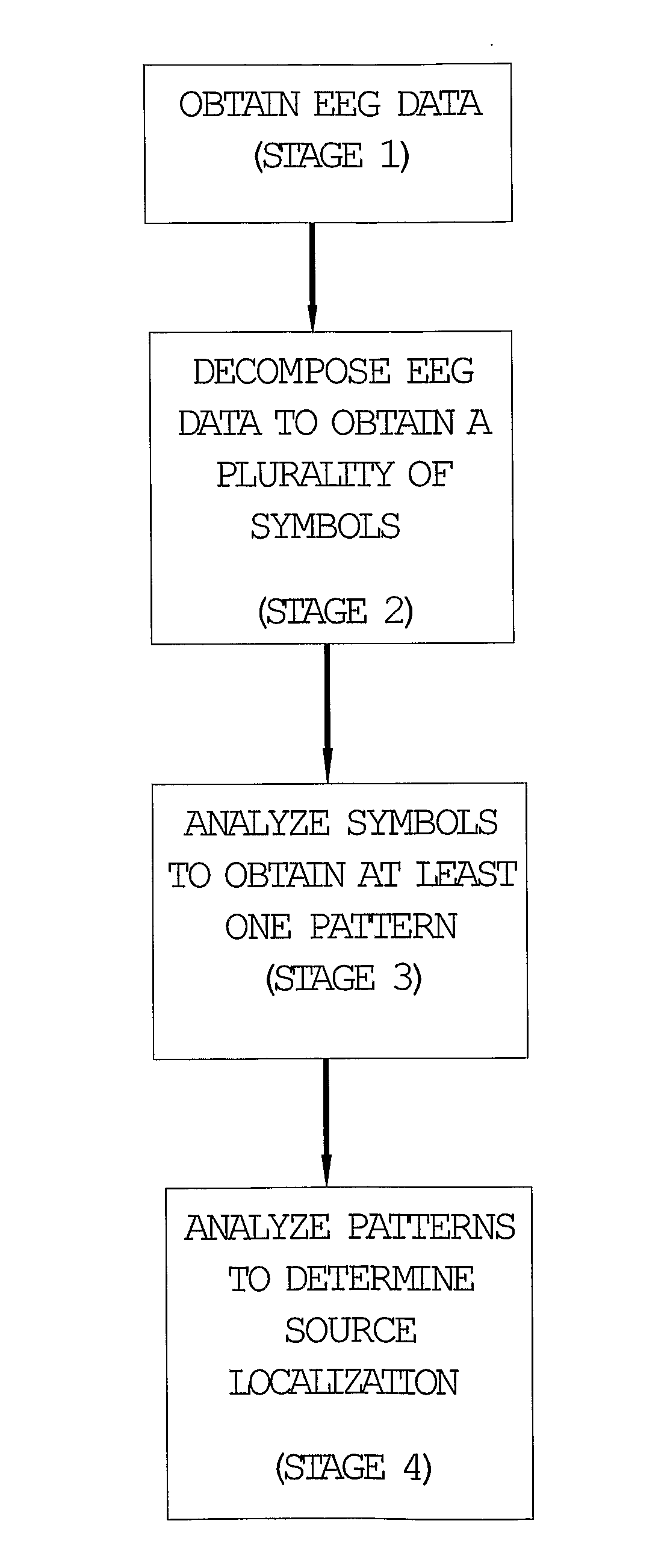Functional analysis of neurophysiological data
a neurophysiological data and functional analysis technology, applied in the field of neurophysiological data functional analysis, can solve the problems of low-level, highly automated background art for analyzing neurophysiological data
- Summary
- Abstract
- Description
- Claims
- Application Information
AI Technical Summary
Benefits of technology
Problems solved by technology
Method used
Image
Examples
Embodiment Construction
[0067]In the following detailed description, numerous specific details are set forth in order to provide a thorough understanding of the present invention. It will be understood by those of ordinary skill in the art that the present invention may be practiced without these specific details. In other instances, well-known methods, procedures, components and structures may not have been described in detail so as not to obscure the present invention.
[0068]The method of the present invention features decomposing neurophysiological data to form a plurality of signal features. As described herein as a non-limiting, illustrative example only, the method of the present invention is described with regard to EEG data.
[0069]EEG data is preferably collected in response to a stimulus or stimuli, such that signals are obtained from the subject before and after the application of the stimulus or stimuli. The stimulus or stimuli may optionally comprise any type of task and / or action, including conc...
PUM
 Login to View More
Login to View More Abstract
Description
Claims
Application Information
 Login to View More
Login to View More - R&D
- Intellectual Property
- Life Sciences
- Materials
- Tech Scout
- Unparalleled Data Quality
- Higher Quality Content
- 60% Fewer Hallucinations
Browse by: Latest US Patents, China's latest patents, Technical Efficacy Thesaurus, Application Domain, Technology Topic, Popular Technical Reports.
© 2025 PatSnap. All rights reserved.Legal|Privacy policy|Modern Slavery Act Transparency Statement|Sitemap|About US| Contact US: help@patsnap.com



